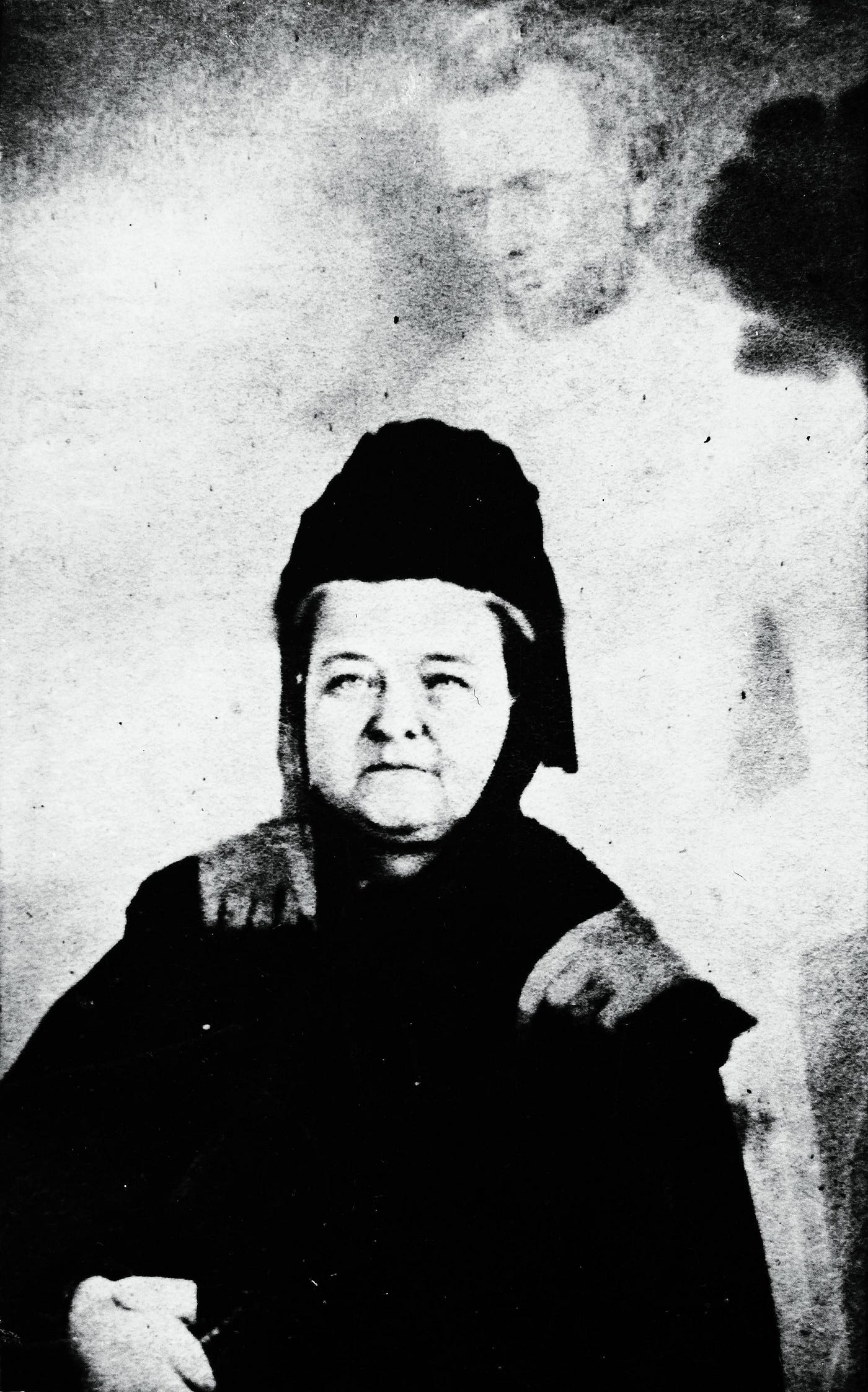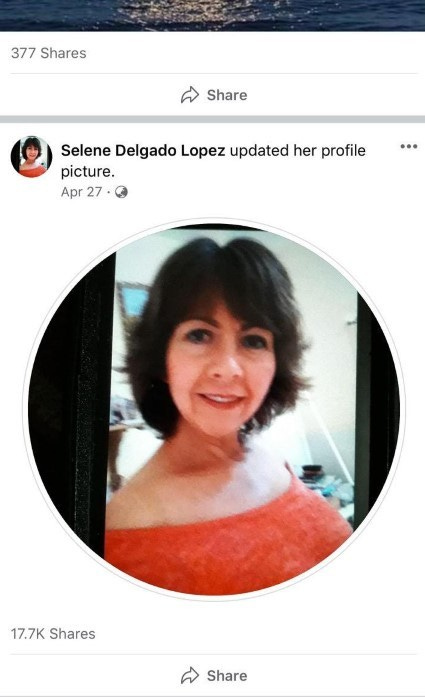WHAT HATH GOD WROUGHT? JIM ACOSTA
Hope is the last thing that dies.
I read in an industry newsletter that I should reintroduce myself in every email. I’m Katherine Dee — an amateur internet ethnographer and professional Art Bell fan. One of my big projects is interviewing people about how they use the internet. I hate to blow smoke up my own ass here, but I think my interviews explain our present moment better than anything else out there. You can read the transcripts under the Case Studies tab. Consider a paid subscription (or at least helping me move up the leaderboard):
This week, Jim Acosta conducted what he called a “one of a kind interview” with an AI-generated avatar of Joaquin Oliver, a 17-year-old boy killed in the 2018 Parkland school shooting. The interactive avatar was created by Oliver’s parents, in collaboration with a nonprofit gun violence prevention group, who granted Acosta the first “interview” with the recreated version of their son on what would have been his 25th birthday.
The five-minute conversation featured Acosta asking AI Oliver about his solution for gun violence. The avatar responded: “I believe in a mix of stronger gun control laws, mental health support and community engagement.” After the exchange, a saccharine and clearly newsroom-trained Acosta said he really felt like he was talking to Joaquin.
People were horrified, and whatever reaction you imagine they had is probably correct. It was called tasteless, dystopian, exploitative. Of course, it would have been worse if Acosta had created the bot himself. But more likely, he heard about it through a press release either directly from the parents, or the non-profit gun violence prevention group that they collaborated with. It was probably a heartbreaking—not to mention strange—request to receive, having been the recipient of several such press releases myself. Maybe Acosta thought he was doing a good deed by humoring them.
The AI itself wasn’t very good, which made the spectacle harder to watch. As Brian Merchant observed in his newsletter Blood in the Machine, the avatar’s “movements are stilted and crude, its voice well out of sync” with “canned lines in a sentence structure anyone who’s used a chatbot for a few minutes will recognize.” Merchant described it as “an animatronic and poorly photoshopped ghost.”
According to the Olivers, one reason they created the avatar was to hear their son’s voice again. Manuel Oliver said of his wife’s relationship to their AI son, “Patricia will spend hours asking questions. Like any other mother, she loves to hear Joaquin saying, ‘I love you, mommy.’ And that’s important.”
It feels like a digital Pet Sematary. The person you put into the machine isn’t the person who comes back. As the mother of a son, when I imagine Patricia talking to that AI — the way she must smile to herself when it tells her, “I love you mommy” — my eyes well up with tears. I am hit with a suffocating mix of secondhand grief and fear—a wave of anxiety washing over me as I imagine a frozen-in-amber Joaquin, able to tell Patricia I love you, but never able to argue about how he doesn’t visit enough or how he decorated his apartment. Never able to introduce her to a girlfriend, or boyfriend, or friends. Never able to come home for Thanksgiving. Never able to grow old. My heart breaks for this family. I’ve met parents who have lost children in tragedies like this. It changes you in ways I cannot describe. To lose a child is to leave a hole that nothing can fill. To lose a child to evil can obliterate your spirit.
Merchant notes that after years of advocacy, the Olivers have fought for gun reform with very little to show for it. “Maybe this AI offers at least a gesture towards a horizon where some kind of change, anything at all, is possible. Even if that promise is illusory.” He calls it “a numb, disconcerting shrug of a something” that captures the appeal of AI as a vehicle for social improvement in an era of institutional failure. Like reborn dolls for women who have lost infants, it is something. Even with my faith in imagination—and in its relationship with technology—I’m not sure that something is healthy.
People have always loaded technology with meaning. Long before anyone started trying to read secret intent into ChatGPT’s responses—which, by the way, I still maintain isn’t always “psychosis”—people believed the systems around them were speaking directly to them. Social media feeds could feel like omens. An unexpected post might be read as a sign you were meant to see it, at exactly this moment. On TikTok, videos with even a hint of menace drew floods of comments saying, “I don’t claim this negative energy,” a kind of crowd-sourced banishing spell, as if the act of scrolling past it invited darkness into your life. YouTube’s recommendation engine was treated like a mirror of the self: the machine knows something you don’t, or won’t admit.
Every communications leap has stirred the same feeling—the sense that we might finally reach across the veil. On May 24, 1844, Samuel Morse sent the first telegraph message — “What hath God wrought” — from the U.S. Capitol to Alfred Vail at a Baltimore train depot. To a public living with short life expectancy, high child mortality, and regular outbreaks of cholera, the telegraph seemed to make the invisible tangible. When the Fox sisters claimed to hear spirit rappings in their Hydesville, New York home four years later, the public was primed to believe.
The telegraph had already shown that messages could travel through invisible wires. Why not from the unseen realm itself?
Spiritualism surged into mainstream American life. Mary Todd Lincoln held séances in the White House after losing her son Willie, desperate to hear from him again. By some estimates, millions of Americans and Britons engaged in spirit communication. The movement staged elaborate performances that felt scientific: spirit photographs that captured ghostly figures hovering behind the living, tightly controlled séances with witnesses and protocols, mediums presenting themselves as human telegraphs receiving messages from the other side. World War I and the 1918 flu pandemic created another wave, with figures like physicist Sir Oliver Lodge and Arthur Conan Doyle claiming to communicate with sons killed in the war. Lodge, a respected scientist, wrote entire books detailing conversations with his dead son Raymond, complete with descriptions of the afterlife’s architecture.
The movement didn’t disappear instantly, but exposure gradually weakened it. In 1888, Margaretta Fox confessed to creating the rappings by cracking her toe joints (a confession she later recanted, adding another layer of ambiguity). In the 1920s, Harry Houdini spent years demonstrating the tricks mediums used—hidden compartments, confederates in the audience, cold reading techniques. Spiritualism carried on in smaller communities, but never again dominated public life the way it had in those fevered decades.
But still, people kept reaching. They turned to spirit photography even after double exposures were explained. They heard voices in radio static. The 1960s and 70s counterculture revived trance mediums, living-room séances, and “channeled” messages from ascended masters. In that same period, inventor George Meek and investigator Bill O’Neil introduced the Spiricom, a rack of thirteen tone generators they claimed could sustain live conversations with a dead NASA scientist named Dr. George Mueller. They held a press conference at the National Press Club in Washington to prove it, playing recordings of what they said were real-time conversations with the deceased. Within months, skeptics showed the “replies” were pre-recorded, possibly by O’Neil himself using an electrolarynx. The machine was discredited, but the hunger it addressed wasn’t.
With computers and the internet, techno-mysticism became both more diffuse and more personal, even unconscious. They forwarded chain emails to avoid bad luck—digital prayers that promised protection if you sent them to ten friends within an hour. They shared videos labeled as “cursed,” daring each other to watch (a similar phenomenon happened with television), as if the screen itself could be a portal for malevolent forces.
But organized movements stayed small and insular. In 1990s, there were a limited number of technopagans. There were the extropians and transhumanists and network spirituality and the CCRU, but none of these ever became the next Spiritualism. What spread among ordinary people instead were the small, personal superstitions: haunted websites, cursed email chains, reading patterns in Twitter’s algorithm, believing the internet itself might be trying to tell you something.
Sometimes the digital folklore took on a life of its own, becoming something genuinely uncanny. Unlike creepypastas or viral horror stories that everyone knows are fiction—or mostly everyone knows—Selene Delgado occupies an unsettling middle ground.
Around 2001, Mexican television Channel 5 began airing missing-person announcements late at night, standard public service broadcasts that ran between programs. One featured an 18-year-old named Selene Delgado—a grainy photo of a woman with an unsettling, fixed smile.
The mystery deepened in 2020 when a Facebook profile under her name allegedly began appearing on people’s friend lists—always already there, as if it had been added years ago, unable to be removed no matter how many times users tried. The profile contained no posts, no information, just that same grainy photo staring out from the friends list. To me, Selene Delgado is the paradigmatic internet ghost story. This is techno-mysticism as it manifests for regular people.
Acosta’s interview with AI Joaquin Oliver is not the first mainstream attempt at digital resurrection, but it arrives at a moment when the technology finally seems capable of sustaining the illusion. Unlike a blurry spirit photograph or a garbled EVP recording, AI can respond, can say “I love you,” can seem to remember. And while it emerges from a culture that seems primed to believe in the spiritual power of AI, my suspicion is that it is not the start of a new spiritualist revival. It is today’s equivalent of Nancy Grace inviting a medium on her show—and humoring him.
Or maybe not. Maybe this time is different. Victorian séances could be unmasked in a single well-lit room. The Spiricom was undone in months. But a sophisticated AI trained on thousands of hours of video, on social media posts, on our digital garbage—one day it might be real enough. It is already real enough for us in our private, grieving moments. Maybe, one day, it will be real enough for broadcast.
We are always reaching for ways to speak to the dead. Sometimes it is too sad to believe we cannot reach beyond the veil. As my Nonna always said, hope is the last thing that dies.
ME AROUND THE WEB:
On the relationship between fandom and AI, for UnHerd
Come to my event with Leigh Stein! You can RSVP here.
Submit missed connections, personals, and advice questions to me directly or on Tellonym. I am also always accepting writing submissions.






Rev. Daniel Reehil, an Exorcist priest, has said he knows priests who receive anonymous text messages with Arcane knowledge. Things a stranger cannot possibly know or discussing the priest's schedule and interactions, intimate details. The number when called does not exist. The web is certainly a portal that can be used by evil forces. Opening portals to the occult is a very bad idea. Bad things happen and evil attaches itself to people and things.
In 1989 the USSR aired a TV special that all Soviet citizens were encouraged to watch that had a spirit medium named Anatoly Kashpirovsky that (they hoped) would psychically heal the population into being “better citizens” as the empire crumbled around them